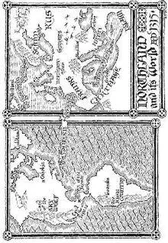Similarly there is a food chain of the air. The mountain banshees, graceful pterosaur-like flyers, are also pack hunters, aerial equivalents of the viperwolves—and again an even scarier hunter preys on them, the mighty leonopteryx.
We always see the thanator alone, like the leonopteryx, and this makes sense from what we know of food chains on Earth. On our planet each step of consumption up the chain is only about ten per cent efficient, in terms of nutrient value. A thousand tonnes of grass can support a hundred tonnes of hammerhead meat, which can only support ten tonnes of viperwolf meat, which can only support one tonne of thanator meat… So if you are an “apex predator,” as a thanator or a leonopteryx is believed to be on Pandora—or a lion, or a tyrannosaurus rex on Earth—the land can only support a small number of your kind. It’s thought that the range of a single tyrannosaur might have been hundreds of kilometres; a thanator’s range is three hundred square kilometres. On Pandora or Earth, for six limbs or four, the rules of the natural economy are set in stone.
This dog-eat-dog (or viperwolf-eat-viperwolf) aspect of life on Pandora is reflected in something else we see onscreen: arms races between predator and prey.
To escape a big fast scary predator, you either evolve to run fast, like the slender deer-like hexapedes, or you evolve heavy armour, like the hammerheads—or you do both, like the direhorses. Another possibility is to use threat displays like the hammerheads, effectively startling away the hunter, if you’re lucky. Meanwhile your hunter in response is evolving to run ever faster, brandishing ever sharper teeth… The end result of an evolutionary arms race is a killing monster like a thanator or a tyrannosaur hunting down a tank-like prey animal like a hammerhead or a styracosaurus—which was a rhino-like dinosaur with a horn on its nose, bony bosses over its eyes and cheeks, and a bony frill over its neck with even more long and pointy horns.
Although Pandora is presented to us as a world of natural harmony, nature is evidently red in tooth and claw here: a world so tough that even apex predators like the thanators need to be armoured. And while the forest has a dreamy oceanic visual feel, the ferocious predators and their heavily armoured prey drew inspiration from the mighty creatures of Earth’s dinosaur age.
But there are gentler elements too. Many of the animals are social, the direhorses, the buffalo-like sturmbeests in their herds, the banshees in their flocks. And we glimpse family groups, the sturmbeest on the move protecting their calves, the direwolf cubs playing.
You’ve no doubt observed that many of Pandora’s animals share common features: six legs, two neural whips (called “queues” in the Na’vi, as they are wrapped in braids of hair), supplementary breathing holes, and four eyes. This applies to flying creatures like the banshee and leonopteryx, as well as to the ground animals from the hammerheads to the thanators. (The exceptions to the general plan are the Na’vi and their apparent relatives the prolemuris, as we’ll see in the next section.) This convincing consistency is a testament to the disciplined imagination of the movie’s designers, and to their inventiveness, such as in the plausible-looking gait of the many six-limbed animals, and the sensible-looking flapping of four wings.
The antenna-like neural whips are used to link the nervous systems of animals, and to link Na’vi to animals, and indeed to link Na’vi to Na’vi. While a Na’vi has just one queue, many animals have two whips. The equine direhorses connect with each other through their whips, bonding emotionally but also passing on information about food sources and threats. We’ll look more closely at neural queues when we come to consider the Na’vi themselves, as well as the Eywa neural network.
What of the multiple breathing holes shown on many of the animals? On Earth some insects have “spiracles,” additional body vents to take in air. On Pandora the vents are for supercharging—taking in more oxygen quickly, a feature that is particularly useful for flying creatures, and we do see prominent vents on the banshees, which, like birds, burn up a lot of energy and need efficient heat-loss systems. But the vents are also a relic of an early stage of the movie’s design process; Cameron wanted some of the animals he envisaged to have the feel of automobiles, and the air vents are a trace of that source of inspiration!
Those multiple eyes are another striking feature. Why would you need two sets of eyes? On Earth, though insects may have many sets of eyes, one pair seems standard issue across the animal kingdom—though a bivalve mollusc known as the “thorny oyster” (Spondylus) has multiple eyes scattered around the edge of its shell. There is a South American fish called the anableps that rises to the water’s surface to seek prey in the air, but while it hunts it is in constant danger of threats from below. So each of its eyes works as two separate optical systems, an upper one for aerial vision and a lower one for aquatic vision; the creature can watch for danger from below while it stares up into the air for its food. These systems have separate retinas, but there is only one optic nerve per eye—two eyes acting as four.
On Pandora the multiple eyes have primarily evolved because of the varying light conditions. Maybe there is no single eye design that can handle the brilliance of a double-sun open sky, the bioluminescent shade of the forest, and the occasional deep dark night. For example a banshee’s primary eyes see in full colour, with vision roughly equivalent to a human’s. Its secondary eyes see in the near infrared, for night hunting: they are like military night-vision technology, capable of detecting prey through its body heat.
Perhaps the most visually impressive of all Pandora’s creatures are the flyers.
The banshees are reminiscent of pterosaurs, the flying reptiles of the past, or of bats, rather than birds. But they are also a little like stingrays or manta rays, another oceanic visual reference, and have jaws rather like fishes’, indicating a possible line of evolutionary descent. Flying is aided on Pandora by the lower gravity and the thicker air, which gives the flyer’s body more impetus with each stroke. But a downside is that the thicker air is harder to move through, and good streamlining is needed to achieve high speeds.
On Earth, flight seems to have evolved independently among three groups of vertebrates (backboned creatures), the birds, the dinosaur-age pterosaurs and the bats (the insects also evolved flight, again independently). All these three groups descended ultimately from the same four-legged bony fish that crawled out of the ocean some four hundred million years ago, to become the progenitor of all vertebrate life on land and in the air. Each of the three groups used adapted forelimbs as wings—but in each group a different evolutionary strategy was used, as if the primordial skeleton was pulled this way and that into new forms. In the birds, the whole forearm flaps; a reduced hand with lost or fused fingers is an anchor for feathers. In the pterosaurs, the wings were sheets of membrane that stretched from a grossly extended fourth finger and were attached to the rear legs. And the bats don’t flap their forearms at all; their wings are membrane sheets attached to a frame made of hugely extended fingers. A bat’s wing is essentially its hand.
The wings of a banshee consist of membranes stretched over a framework of bones, a little like a tent over a frame; they look something like the wings of a bat or a pterosaur. Each main fore-wing has three sail-like structures on the end, stretched over struts of bone. These vanes are used to generate extra lift and give fine control in flight. The wing also has an impressive claw.
Читать дальше










